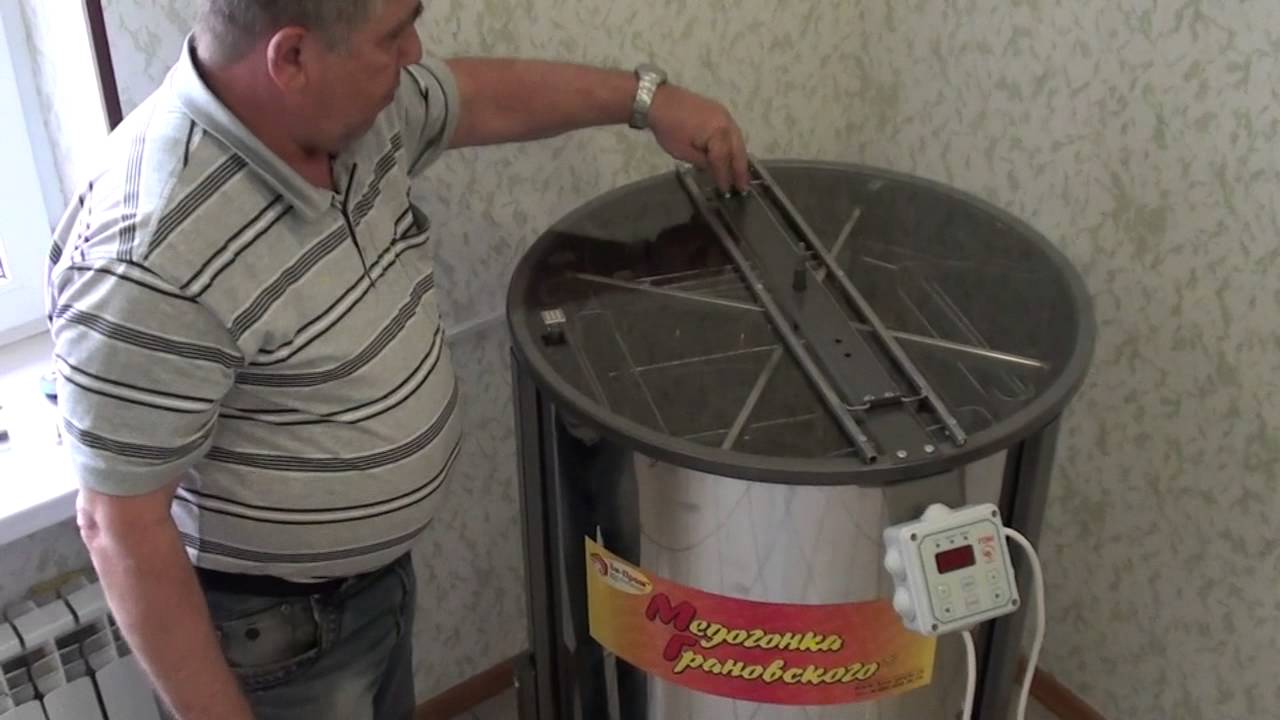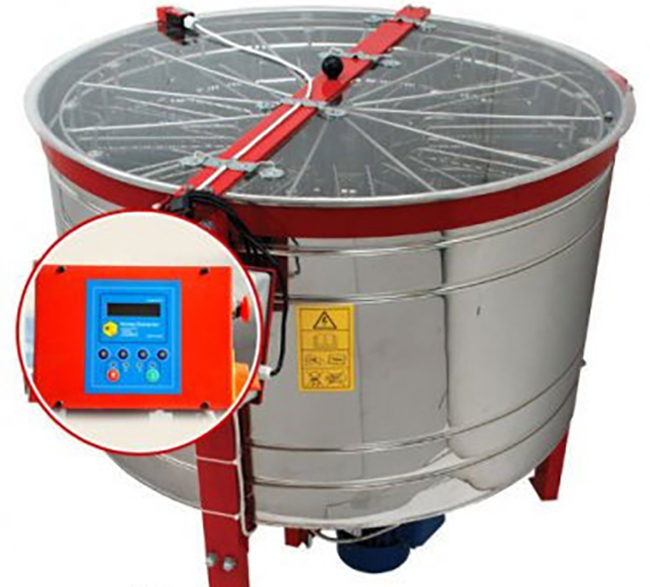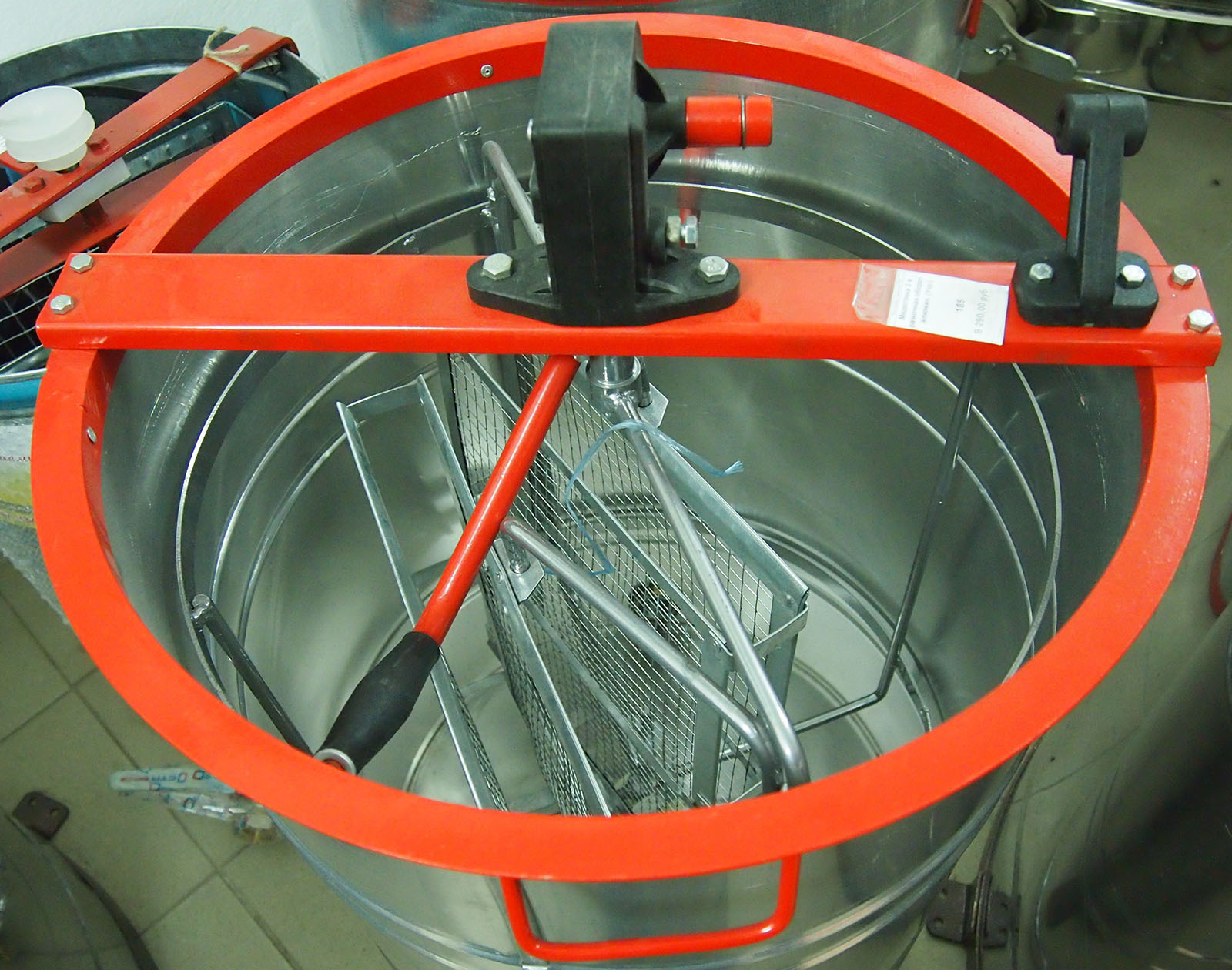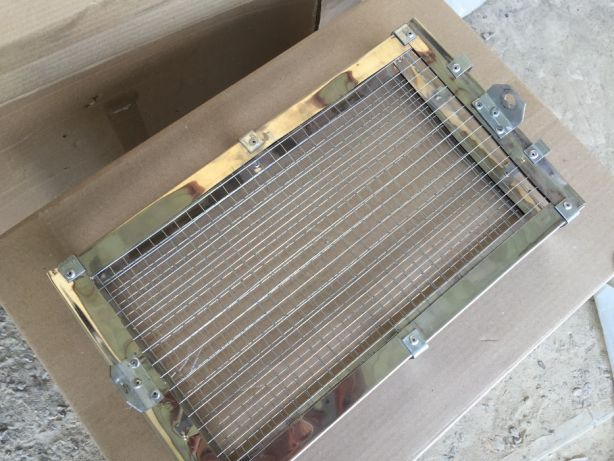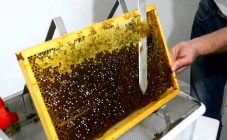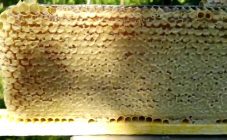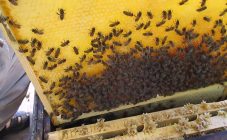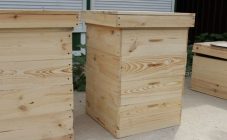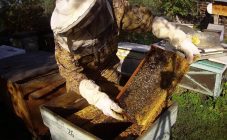Content:
Today one of the obligatory tools of beekeepers in large apiaries is the honey extractor. Beekeepers know how difficult it is to siphon honey from a honeycomb. It is to facilitate the whole process that this unusual design is needed. For those who have not yet encountered such a mechanism, the principle of its operation is interesting. Everything is simple here: frames with raw materials are installed in a special tank at an angle, then the honey extractor drive starts to spin up. Together with the rotation, centrifugal force begins to act, which makes the honey flow. At the moment, the Biprom company is considered the best on the market, producing honey extractors, using Granovsky's drawing as a basis.
Description
Granovsky's honey extractor is suitable not only for professionals, but also for beginners. Helps to harvest different volumes in large and small apiaries. In order to facilitate the collection of products, one way or another, beekeepers are thinking about buying a structure for pumping honey, the manufacturer of which is Biprom.
It should be understood that there are the following types of honey extractors, which differ from each other:
- Jordial. The most popular type of device for pumping crops from unpacked frames.
- Radial honey extractor. Its principle of operation consists in the presence of four cassettes, when placing them, it is imperative to take into account the radius of their placement. To a greater extent it is used for vertical placement of honeycomb cells.
- Electrically operated. It can have different characteristics and be used for different purposes. It is considered the most efficient for pumping out the largest amount of products. At the same time, the electrically driven honey extractor works in automatic mode, does not spoil the frame and is simply controlled. Important components are the engine, axle, drum, honeycomb cassettes and honey extractor stand.
Electric honey extractor
Looking at the mechanism, you can see the centrifuge with which our grandmothers squeezed out wet laundry. An electric honey extractor consists of a tank, which is shaped like a cylinder with a tap at the bottom. The tap is designed to drain honey.
The cylindrical body ends in a cone at the bottom with the tip pointing towards the top of the body. There is also a thrust bearing at the bottom with the lower end attached to the vertical axis. The top end is usually attached to the actuator.
In this device, the vertical axis is necessary so that a drum for placing honeycombs can be attached to it. In order to work safely and to prevent situations associated with dropped frames during pumping, the axle is specially designed with a size that exceeds the size of the frame. In this case, the inner and outer parts of the cylinder are sheathed with a metal mesh.
Electric honey extractor
Radial and chordial honey extractors of various sizes, for 2, 4, 6 or 8 frames, are equipped with an electric drive. Which honey extractor is better radial or chordial, everyone must determine for themselves.The popularity of the electric drive is that it controls the speed at which the drum spins and the period of time.
In addition, like any bee technique, the honey extractor is equipped with a switch that changes the direction of rotation without much effort. The presence of a speed sensor makes it possible to ensure a stable rotation speed, which is an indisputable advantage. It is surprising that the fullness of the frame is not able to influence the operation of the device.
The popularity of the electric drive is due to a simple reason - a significant reduction in time and labor costs, along with an increase in the number of finished products at the end.
The following characteristics are considered standard for electric drives:
- Impulsive motor type;
- Voltage - 10 to 14 watts;
- Electric or induction speed sensor;
- Rotation speed varies from 30 to 150 rpm;
- Work period - from 1 to 12 minutes;
- Product weight - about 2 kilograms.
All types of devices operate on a regular battery. There are examples that are powered by solar panels and from the electrical network.
Electric honey extractor consists of:
- Tank;
- Crane;
- Electric rotor;
- 2 tires;
- Honey extractor pulley.
Using the device, relying on the basic rules:
- Before loading the honeycomb into the tank, they are unsealed;
- It is necessary to set each cell exactly opposite each other;
- Before starting the minimum speed, the rotor must be rotated by hand;
- After 5 minutes of work, you can increase the voltage;
- The collection of products is carried out in cycles, lasting no more than 20 minutes;
- After finishing work, you can drain the crop;
- Do not open the tank lid while pumping out.
Two-frame honey extractor
When there are restrictions on the number of frames inside the hives, a two-frame honey extractor is useful.
The device for processing 2 frames can have a different type of electric drive. The condition and characteristics of this part affect the pumping speed. The serviceability of the structure used should be monitored. It is also important to maintain its purity, promptly remove the remains of honey products that interfere with the full operation of the mechanism.
The machine should be put into operation gradually, starting at a low speed. You can gradually add the rotor speed. A two-frame installation consists of the same elements as other types, the only difference is the number of frames for honeycombs. The whole mechanism works according to the same rules, without any special nuances.
Which honey extractor is better
The modern market for beekeeping equipment surprises with a choice. Having decided to make such an acquisition, the problem arises of how to choose a honey extractor, comparing cost and quality.
The most popular models, according to experts, are:
- CFM-8W - model for 8 full or 16 half frames for honeycombs. Made of stainless steel, 750 watts. The model was developed by Germany. The design has cassettes that can be rotated. The tank is equipped with a transparent, acrylic lid;
- Beginner - has 2 cassettes based on the "root" standard. It is compact and lightweight, which allows it to be transported even by light vehicles. The main part is made of stainless steel, only the lid and faucet are plastic. Also, it should be noted the presence of legs that allow you to place the device on any surfaces and adjust the height. It is considered a great option for beginners in this business;
- Employee-PRO is not inferior to its predecessors in compact size. Can be used in small apiaries. It belongs to the chordal type, it can work simultaneously with 3 frames. Made entirely of steel. The model is capable of carrying out a maximum of about 200 revolutions in 1 minute, which distinguishes it from the rest.This means that honey can be pumped out from one honeycomb in less than a minute. It is possible to rotate the frames 180 degrees. A stainless steel stand is provided;
- Lorena-PRO - powered by an electrical network. The device comes from Germany, which guarantees the quality of the product. Half frames are provided at a time in the amount of 15 pieces. Drive power - 80 watts. Differs in compact dimensions;
- Maren - has a tank diameter of 400 millimeters. The electric drive in this case is located above the tank. The device is able to accommodate 3 frames such as root. Ideal for small scale apiaries.
Types of honey extractors
The honey extractor is the main tool to help harvest honey. There are many variations of this device, but they are based on one principle of centrifugal force. The only requirement for such structures is to pump out honey without damaging the honeycomb.
Depending on the scale of the apiaries, cassette honey extractors can be used:
- Two-frame;
- Three-frame;
- Four-frame;
- Twenty frames;
- Fifty frames.
Focusing on the position of the cassettes, 2 types of devices can be distinguished:
- Radial honey extractor - differs in the arrangement of cassettes along the radius of the circle.
- Chordial honey extractor - the arrangement of the frames is made in a circle, top to the wall of the structure.
This type is divided into:
- Reversible - cassettes are swapped by flipping through them;
- Non-reversible - to pump out the other side of the honeycomb, you will need to remove the frames and turn them over by hand.
By the type of drive, the devices can be divided into manual and electric.
Honey extractor cassettes
The cassette is considered an important element of the entire structure. Its task is to securely fasten and keep in place the frames with honeycombs from which honey products are pumped. Most factory models use stainless steel to make them. Needlemen often change steel for wood and even plywood.
The cassettes are based on a mesh, which is considered a cover for frames that are fixed with rivets or corners. If the cassettes are made correctly, the frame is easy to install and fits well to the net. Otherwise, the honeycomb will deform during the process.
Honey extractor stand
The stand is an add-on that is not considered a required part of the honey extractor. At the same time, experienced beekeepers assure that its presence will not be superfluous. You can do it yourself or buy a ready-made one and no longer experience any problems with the location of containers for honey. Thanks to such a stand, the device does not take up much space, and the risk of curious situations at inopportune moments is reduced. The dimensions of such stands directly depend on the size of the tank, yield indicators and the scale of the apiary.
